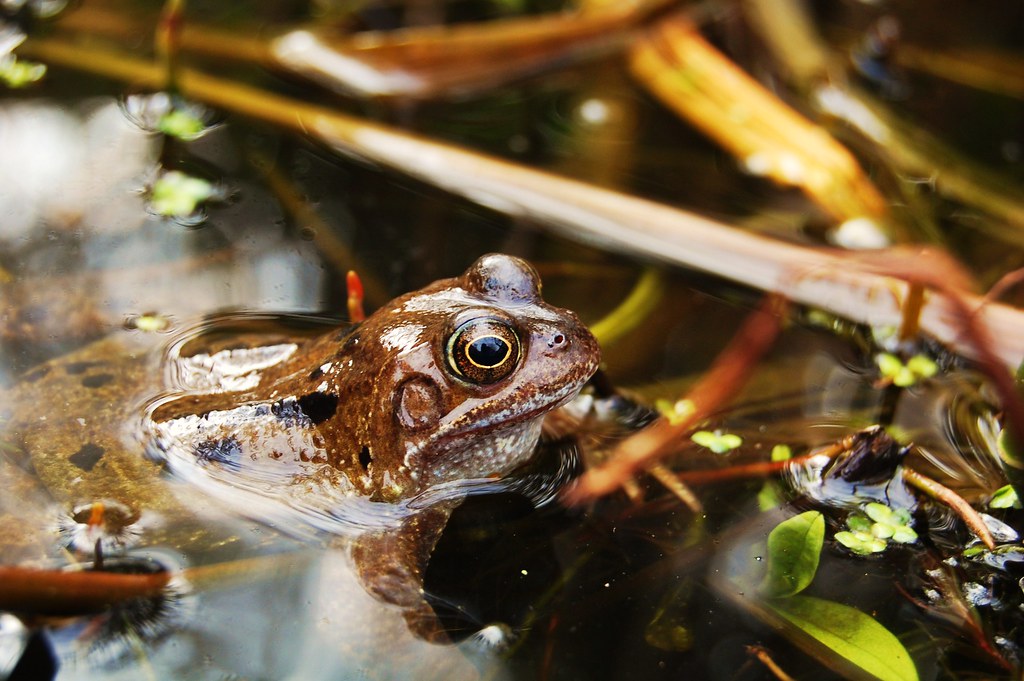#SaveTheFrogsDay: The croaky amphibians who are a key indicator of environmental health
26 April 2019
They can jump over 20 times their own body length, absorb water through their skin and are so loud they can be heard over a mile away – frogs are truly amazing.
Unlike the other amphibians (salamanders, newts and caecilians), adult frogs have no tails, but they do have many adaptations to jumping, such as long hind legs, elongated ankle bones and a short vertebral column. Some frogs can jump over 20 times their own body length – that is like a human jumping 30 metres!
There are over 5,000 frog species in the world and each one has a unique call. We think of frogs as small animals but some frog calls are so loud they can be heard a mile away.
They say humans can survive for three weeks without food, but will perish much more quickly without drinking water. Frogs however, don’t need to drink water at all.
Instead they absorb it through their skin and this super-power is one of the reasons why the species are such good indicators of environmental health.
Their highly permeable skin absorbs bacteria, chemicals and other toxins just as easily as it absorbs water. This trait makes them susceptible to changes in the natural environment, and because they live on both land and in the water, they are a good indicator of the health of these two different environments within the same region.
Frogs also play a key role in maintaining healthy eco-systems.
They are critically important within the food chain as both predator and prey. Tadpoles feed on algae, helping to regulate algal blooms, reducing the chances of algal contamination, and keeping our waterways clean.
They are also excellent pest controllers, competing with mosquito larvae for food sources and eating millions upon millions of larvae and adult mosquitos that can transmit deadly diseases including dengue fever, malaria.
Tadpoles and adult frogs are a large food source for a huge number of fish, mammals, birds and reptiles. In parts of the world where we have lost amphibian species, we immediately see a decline in other species reliant on frogs and tadpoles for food, and algae growths clogging up the waterways.
The frog’s natural behaviour makes them a key species and one of the most important members of the natural community to ensure the continued health of the forests and waterways in which they live. The disappearance of frogs disturbs an intricate food web with cascading effects felt throughout an entire ecosystem.
Frogs have existed for nearly 300 million years, unless we act quickly, frogs and other amphibian species will continue to disappear, resulting in irreversible consequences to the planet’s ecosystems and to humans.
BACK







